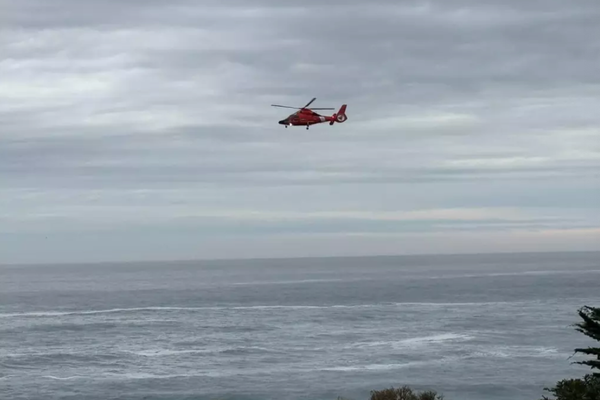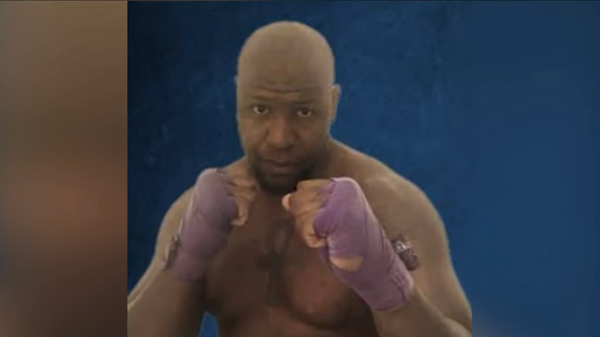A new Netflix documentary attempts to cast doubt over the authorship of the Pulitzer Prize-winning "Napalm Girl" photo — an image that helped define the horrors of the Vietnam War.
Why it matters: The dispute reopens questions about how Western media historically overlooks the work of local freelance journalists in war, but is drawing strong reaction from some photographers of that era.
The big picture: "The Stringer: The Man Who Took the Photo," scheduled to debut on the streaming service on Friday (Nov. 28), revisits the 1972 image attributed to Associated Press photographer Nick Ut.
- The film premiered at the Sundance Film Festival in January, but will now reach a larger audience.
- It suggests that stringer Nguyễn Thành Nghệ, not Ut, captured the iconic photograph, yet never received credit from The AP due to office politics and the general disregard for local freelancers.
- The AP and Ut dispute that story. A lawyer for Ut also sent a sworn statement from Tu Pease, an AP Saigon office secretary and payroll manager, who recalls Ut coming back from the scene and describing the photo he took in 1972.
Zoom in: The film follows journalist Gary Knight and others as they search for Nghệ after former AP Saigon photo editor Carl Robinson claims Ut didn't take the famous photo.
- Talking to family and others, Knight hears stories that have remained silent for half a century, pointing to Nghệ as the photographer.
In an interview with Axios, director Bao Nguyen said he hesitated to take on the project because "Nick Ut is a hero in our community," but ultimately joined "out of respect for journalism's duty to pursue truth" and facts.
- "For so long, Vietnamese people were expected to be survivors or victims — not witnesses or authors of our own history," Nguyen said.
What they're saying: "I saw the photo in that moment and just took it," an ailing Nghệ tells Knight in Vietnamese in the film.
- "And I managed to capture the moment, and I knew I got the money shot."
- Nghệ said The AP got him a copy of the photo, but his wife later tore it up.
- Nghệ said he heard around six months later that the photo was winning awards. He had no proof that he had captured the image.
"I felt upset. I worked hard for it, but that guy got to have it all," Nghệ said.

Friction point: David Hume Kennerly, a friend of Ut and a Pulitzer Prize-winning Vietnam War feature photographer, tells Axios the film is ludicrous and isn't believed by many photographers who worked alongside Ut.
- "It's a work of fiction. Many of the journalists who were (at the scene) know Nick took the photo."
- "I have a hard time believing Nick has been living with this all these years and never said anything," said Kennerly, who watched the film with Ut.
- Kennerly was a UPI photographer and photo bureau chief at the time.
Context: The "Napalm Girl" photo — formally titled "The Terror of War" — is one of the most powerful and influential images in modern history.
- Taken on June 8, 1972, the black-and-white photograph captured a young Vietnamese girl, Phan Thi Kim Phuc.
- She was running naked down a road and screaming in pain after South Vietnamese bomber planes mistakenly struck her village of Trảng Bàng.
The other side: The AP said in a statement that the news agency launched a review of the photo's authorship while "aware that a film challenging this historical record was in production."
After a year examining "all available evidence" related to the photo, AP concluded that the photo would remain credited to Ut:
- "AP's extensive visual analysis, interviews with witnesses and examination of all available photos taken on June 8, 1972, show it is possible Ut took this picture. None of this material proves anyone else did."
- "Our investigation has raised significant questions, which are outlined in the report, that we may never be able to answer. Fifty years have passed, many of the people involved are dead and technology has limitations."
Yes, but: The organization World Press Photo announced in May that it has "suspended" its longstanding attribution to Ut for "The Terror of War" picture.
- The group's own report said the "visual and technical" evidence "leans toward" an emerging theory that Nghệ captured the image.
The bottom line: In a statement to the filmmakers, Ut maintained that he took the photograph.
- Phuc has also said she believed Ut took the photo.







